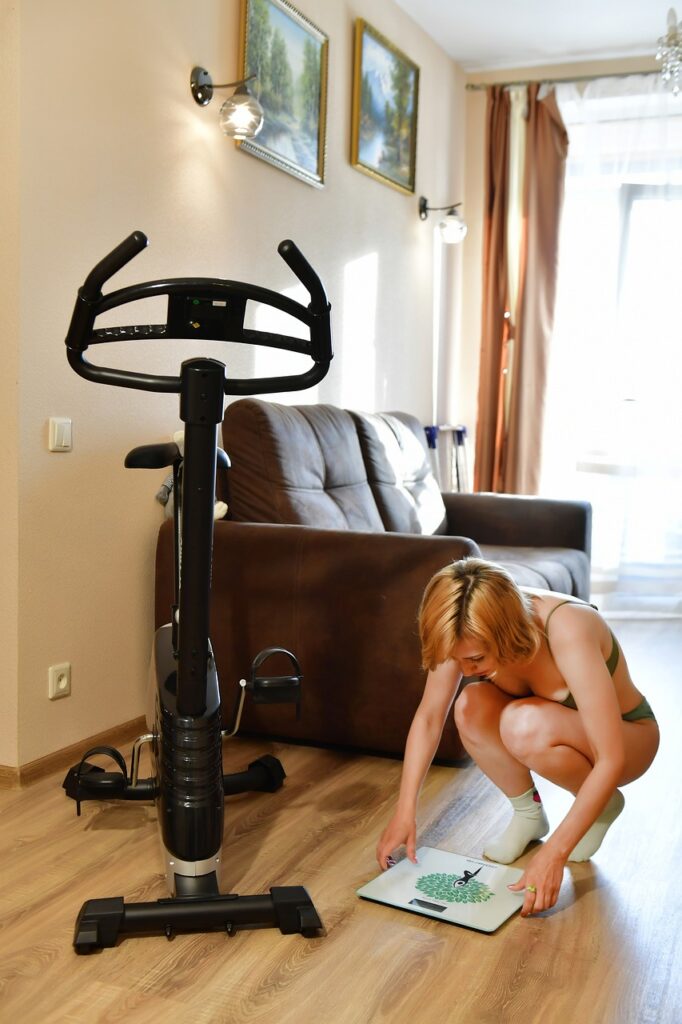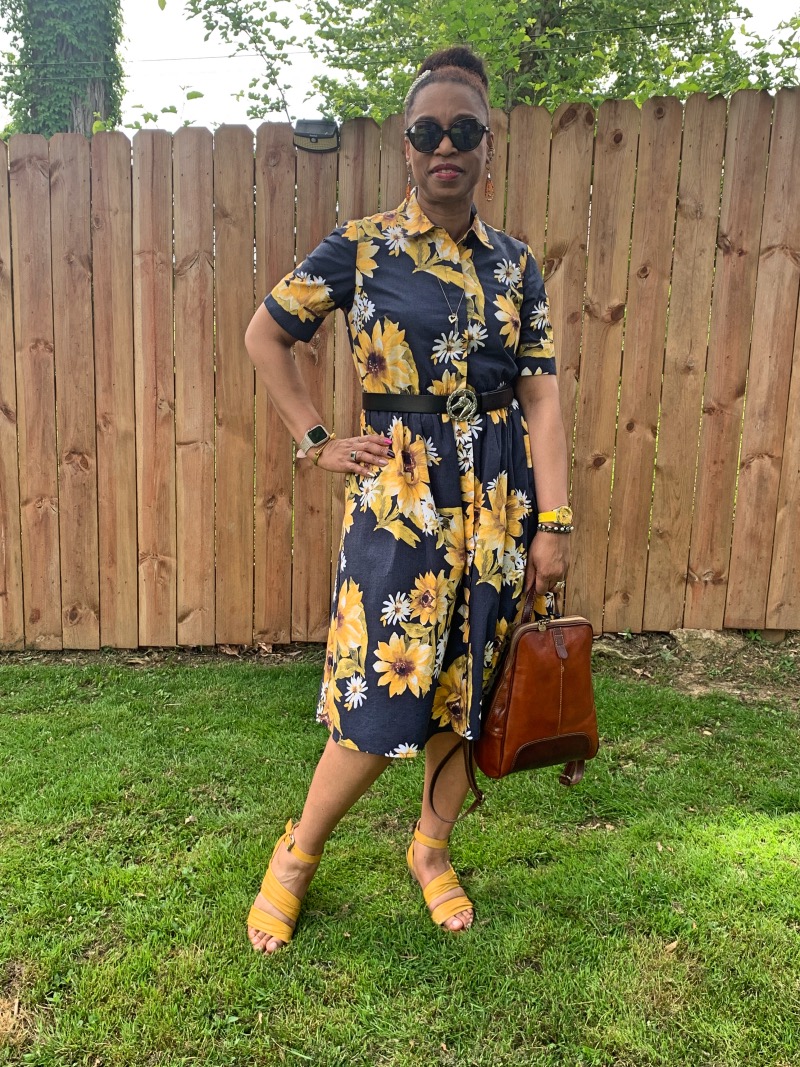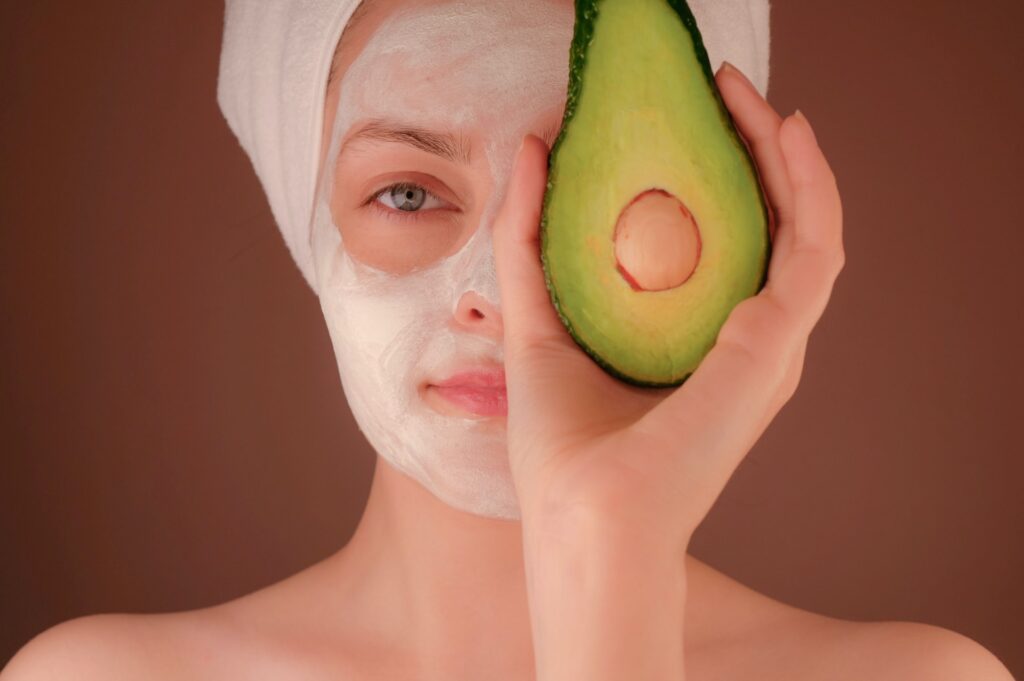by | Jun 9, 2023 | Food |
If you are trying to lose weight, It is as much about mindset as it is about the practices you embody. When it comes to losing weight, our mindset is just as important as the food we consume. Here are a few things to get you in the right mindset to lose weight effectively.
Set Smaller Goals
Many people think about losing a lot of weight as their first goal, but instead, it’s far more effective for you to list smaller goals that will help you over time. We must remember that losing weight is about improving our lifestyle without opting for short-term tactics. This could include something like practicing intermittent fasting, but it’s also important to remember that if you have a significant calorie deficit, this will go against you because your body will effectively lock up any excess fat as storage. This is where you may benefit from the best meal replacement shakes on the market to ensure you get the right amount of calories.
It’s not about having a complete calorie deficit but about reducing your calorie intake gradually, which is why setting smaller goals by eating more fruits and vegetables or having a little bit more physical activity are things that are more manageable because you will barely notice the additions of them into your life. Making change is difficult, so we need to start with the small things that gradually get bigger and take over in time.
Set a Plan and Stick to It
If you plan everything, including your meals and your fitness regimes, this will help keep you on track. It’s important to schedule these things into our lives so we know exactly what we’re going to eat and when we’re going to exercise, and this means that over time, these routines slowly become a habit. It can take up to three months for a proper habit to form, which is why scheduling everything at the very beginning and sticking to it will create a roadmap for success.
Get Rid of Those Old Habits
We all know the habits that are detrimental to our abilities to lose weight, but even if you’re not sure, you need to start identifying the behaviors resulting in weight gain. For example, if you like to relax on the couch at night and instantly reach for a chocolate bar every single evening, you should start by changing that bar of chocolate to something healthier, and gradually, these little changes become habits over time.
One of the best ways to eliminate any temptation is to remove anything unhealthy from your pantry, but it’s not about eliminating it. You must replace them with healthier options. If you are someone that, like the best of us, has an addiction to sweet treats, one of the fundamentals of escaping the clutches of addiction is replacing a bad habit with a healthier one. Lots of people think that they can go cold turkey, but it’s essential to avoid putting that pressure on yourself because if you are someone who is a stress eater, you will inevitably fall back on those older habits which, as we all know, die hard.
Be Realistic in Your Expectations
Having long-term goals is critical to keep us on track, but when we ask ourselves how much we would like to weigh in 12 months’ time, having a realistic number that is totally doable will ensure that we stick to the plans better. For example, if you want to be 12 pounds lighter this time next year, this works out to one pound per month, which is easily achievable and manageable in the context of your life. You can always change it to a more adventurous number after six months if you are on course, but it is critical from a mindset to start at the realistic end of the spectrum.
Know Why You Want To Do It
Motivation makes it easier to make changes in your life. If there is a dress that you want to fit in and it’s too tight, setting a realistic strategy and seeing that dress every day can act as a reminder as to why you are doing this and will give you motivation during those challenging periods when you are in a lot of doubt. Preparing yourself properly to lose weight is critical, but remembering that motivation is a fantastic tool during those tough times will provide a double whammy of inspiration.
Reward Yourself
When it comes to the smaller milestones, for example, if you have lost two pounds in two months or a few inches around the waist, you need to reward yourself so you can recognize the hard work you have done and celebrate the steps that you are taking to be a healthier version of yourself. Choosing rewards that will make you feel good about your accomplishments is critical, and this means not indulging in cookies and ice cream.
Thinking about what would be a great reward system for you will help to reduce those temptations. For example, a trip to the movies may be a great reward, but there are a lot of unhealthy temptations, so make sure you have something like popcorn or some fruit in your bag to help reduce those desires.
Keep Track Of Your Progress
Whether you are exercising to lose weight without changing your diet or you have completely overhauled your eating habits, one of the best ways to promote positive behaviors and reduce those unhealthy ones is to watch your progress like a hawk and detail everything that you eat and what you do, so if you end up not losing weight a particular month, you can understand why. It’s also a great way to keep yourself accountable and will work wonders to reduce those temptations to eat unhealthy foods.
For many, embarking on a weight loss journey can be daunting, so mindset is just as crucial as your meals.
by | Jun 8, 2023 | Lifestyle |
Did you know that skin wrinkling, a prominent aging sign accelerates at age 33? Indeed, your body undergoes various changes as you age. While these transformations may vary among people, embracing them with grace and understanding their underlying causes is essential. Doing so will help you better appreciate your body and care for it. This discussion explores four common physical changes accompanying aging and how to manage them.

Image Credit
Wrinkles and fine lines
Statistics show that approximately 90% of visible aging signs are attributed to sun exposure, making it the leading factor responsible for wrinkles and fine lines. As you age, your skin produces less collagen and elastin, proteins that contribute to its elasticity and firmness. This reduction in collagen and elastin production, coupled with the effects of external factors like ultraviolet (UV) radiation, leads to wrinkles, fine lines, and sagging skin. Indeed, many people will purchase skin products to slow down the process at the first sign of visible wrinkling. Other individuals also seek treatments such as dermal fillers or laser therapy to diminish the appearance of wrinkles. While embracing these changes can be empowering, it’s important to remember that this stage is a natural process, and taking care of your skin by wearing sunscreen, staying hydrated, and adopting a healthy lifestyle can help maintain vitality and resilience.
Reduced bone density
Bone density loss, commonly known as osteoporosis, is another physical change often accompanying aging. According to the International Osteoporosis Foundation, one in three women and one in five men over 50 will experience osteoporotic fractures. As you age, your bones become less dense and more prone to fractures, primarily due to a decline in the production of bone tissue and a decrease in calcium absorption. Regular exercise, a balanced diet rich in calcium and vitamin D, and avoiding nicotine can help maintain bone health and reduce the risk of osteoporosis-related complications. It cannot be cured or stopped as a degenerative condition, but it can be slowed down enough to improve your quality of life.
Hair loss and hair thinning
Hair loss is a common concern among men and women as they age. Approximately 85% of men experience significant hair thinning by age 50, while nearly 40% of women face hair loss by age 60. The primary cause of age-related hair loss is a combination of genetics, hormonal changes, and the shrinking of hair follicles. Fortunately, advancements in medical science have led to effective hair restoration procedures such as hair transplants. A hair transplant involves transferring healthy hair follicles from one part of the body (typically the back of the scalp) to the balding areas. This procedure provides a natural-looking and permanent solution to combat hair loss, enhancing both physical appearance and self-confidence.
Changes in vision
Aging also affects your vision, often resulting in presbyopia, cataracts, and age-related macular degeneration (AMD). Presbyopia is a natural age-related condition that impacts the ability to focus on nearby objects due to the hardening of the lens in the eye. It explains why older adults are most comfortable viewing things when positioned far away from their eyes. Cataracts are also common in old age and are characterized by clouding the eye’s lens, causing blurred or dimmed vision. All these age-related eye conditions are treatable, but you can have better vision when detected and treated early. Corrective measures like glasses, contact lenses, or surgical interventions like cataract surgery or laser treatments can help manage vision-related changes effectively. However, regular eye exams, maintaining a healthy diet rich in antioxidants, protecting your eyes from excessive sunlight exposure, and avoiding smoking are crucial for preserving eye health as you age.
by | Jun 7, 2023 | Fashion, Lifestyle |
Your skin is the largest organ in your body. It protects you from disease and injury and helps regulate your body temperature to keep you healthy. Some illnesses affect your skin, meaning it’s a good idea to watch it. Also, healthy skin is considered beautiful skin. If you look after your skin, then you will boost your self-confidence and ensure better health. Here are some tips to help you do this.
Learn Your Skin Type
The first step to knowing how to take better care of your skin is to learn your skin type. Everyone is unique and has different needs; the same is true for your skin. One treatment or skincare technique might work for one person but not for another.
Knowing your skin type should inform what products you use and how you care for your skin. You can break your skin type down into five basic categories. These are:
– Dry skin
– Oily skin
– Combination skin
– Normal skin
– Sensitive skin
Common Skin Conditions
As well as being aware of your primary skin type, you should consider common skin conditions. Eczema is a common skin condition characterized by dry, sensitive skin. It can be painful and prone to infections, especially if your skin cracks and breaks. Eczema can be affected by diet, stress, weather, or specific products. Contact dermatitis is linked to eczema and occurs when your skin comes into contact with an irritant and becomes inflamed or develops a rash.
Another common skin condition is acne. Acne is associated with teenagers, but anyone can get acne. You might have spots at specific points in your menstrual cycle or at certain times of the year. Over-the-counter medication can control acne, but sometimes you may need to see a dermatologist for more potent medicines.
Other skin conditions, like psoriasis, are linked to autoimmune diseases. Pay attention to your skin and what it might be telling you.
Regular Skincare Routine
The best way to care for your skin is to maintain it. Use a cleanser and moisturizer at least once or twice daily. Your skin goes through a lot during the day, and these products will help keep it looking healthy and supple. If you wear makeup, wipe it off before sleep and give your skin time to breathe.
Remember your skin type when putting together your routine. If you have dry skin, then moisturize more often. You should also use products designed with your skin in mind, as this will produce the best results for you and your skin.
Skincare Treatments
Sometimes, it’s well worth pampering yourself and your skin with more intensive treatments. Look for local medspa services to improve how your skin looks and feels. These treatments can combat aging and give specialized care to problem areas. You can also consult a specialist who knows how to treat your skin best.
by | Jun 6, 2023 | Lifestyle |
While many people have their favorite times of the year, there is beauty to be found throughout every month. Thinking beyond the materialist side of the holidays and looking for small pieces of joy throughout the year is an excellent way to celebrate nature’s beauty. One of the most extraordinary things about nature is seeing the seasons change. Each season has unique characteristics that set it apart and make it memorable. Once you start to look, you will soon be able to spot beauty everywhere you look.

Image Pexels CC0 License
Becoming attuned to the seasons and appreciating each can enrich your life in many ways. Looking for beauty in every season enables you to live mindfully and to find joy in the little things in life. If you want to celebrate every season, you may wonder how to start. The following ideas should provide you with plenty of inspiration for seasonal living:
Get Creative
Indulging in seasonal crafts inspired by nature and tradition is an excellent way to immerse yourself in the season’s beauty. This could mean making a spring flower centerpiece for your table or lavender pouches to fragrance your closet; the options are endless. When it comes to seasonal crafts, the only limit is your imagination.
One of the great things about living by the seasons is that you learn so much more about traditions, which can help you develop a greater understanding of the world. For example, if you want to make an advent wreath, reading an explanation of the symbolism of this by Rainer Blanchette can help you further your knowledge.
Cook for the Season
Cooking for the season has a wide range of benefits. Firstly, eating seasonal produce allows you to enjoy fruit and vegetables when they are tasting at their very best. Selecting produce that is in season also helps you to eat in nature’s rhythm and choose it when it is abundant. Another excellent reason to eat seasonally is that you will benefit from the produce being at its best. This means that fruit and vegetables are packed with nutrients and flavor when they are in season.
Eating seasonally makes mealtimes more enjoyable. Are appreciation of the seasons and the foods that they produce are interconnected. Your memories about specific times of year are probably intertwined with the foods you associate them with. So eating in season is an excellent way to further your enjoyment of foods throughout the year. To ensure your seasonal produce is freshest, you may want to plant your fruit and vegetables to harvest your crop.
Decorate Your Home
Decorating your home according to the seasons is an excellent way to refresh it throughout the year. If you like to change things up regularly, then introducing some seasonal décor is a perfect way to do this. Whether you decorate your porch for fall or want to add fresh flowers throughout your living space in spring and summer, marking the season will enhance your home.
by | Jun 6, 2023 | From the Heart |
How we look hugely impacts how we feel — so if you want to boost your confidence then why not consider making some positive changes to your appearance? Here are a few great ways you can go about it!
Skin
Clear, glowing skin can do wonders for your self-confidence. Establishing a skincare routine that suits your skin type is crucial — cleansing, toning, and moisturizing daily can help maintain a healthy complexion. Don’t forget to exfoliate regularly to remove dead skin cells and unclog pores. If you have any ongoing skin issues, visiting a dermatologist rather than burying your head in the sand will make you feel so much better- you don’t have to just deal with issues like acne and chronic dermatitis. Pamper yourself with face masks or natural remedies to revitalize your skin, and protect it from the sun with sunscreen daily to prevent damage.
Hair
Your hair is your crowning glory, so make sure it shines! Experimenting with different hairstyles, cuts, and colors can boost your confidence — if you’ve been sporting the same style for decades, are you sure it still suits you? As you age and your face changes, the length and colors that look best on you might change too. Even a subtle shift can make a huge difference. A slight change in length or a few highlights around the face could be all you need. Nourishing your hair with regular conditioning treatments will make you feel fabulous too.
Teeth
A bright, confident smile is a true game-changer. If you’re self-conscious about your teeth, visit a cosmetic dentist as much can be done! If you’re reasonably happy with your smile, something as simple as at-home whitening treatments can take your teeth from good to great! Nice teeth allow you to smile widely and be happy without feeling self-conscious.
Physique
Improving your physique isn’t about conforming to a specific body type or size. It’s about taking care of your body and feeling vital and energized. Regular exercise, such as jogging, swimming, or yoga, improves your physical fitness and boosts your mental well-being. Choose activities you enjoy and remember that consistency is critical, for example, it’s better to commit to something low impact you enjoy for years than start an intense routine that burns lots of calories and fat, but you can only commit to it for a few weeks before giving up.
Clothing
Your wardrobe is a reflection of your unique style and personality. Experiment with different outfits, colors, and patterns to find what makes you feel amazing. If you research different body shapes and ascertain what shape you have it can make shopping for clothes so much easier. As you know at a glance what kinds of pieces are most likely to flatter and look good on you, and which pieces you’re better off giving a miss.










Follow!